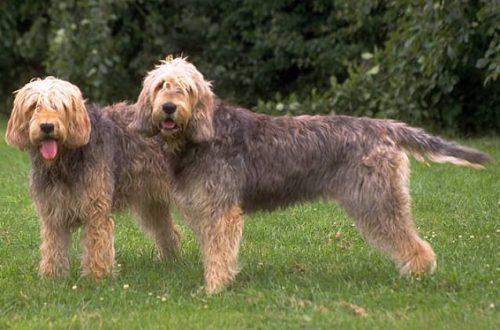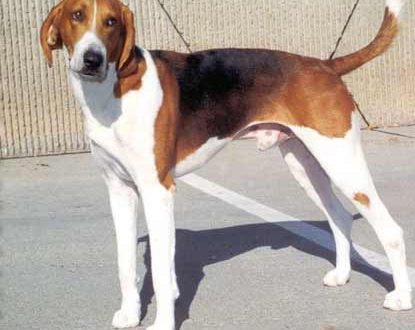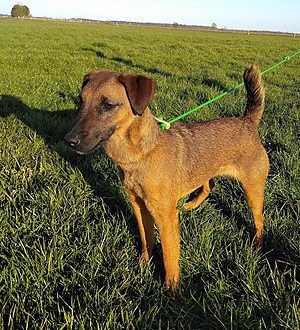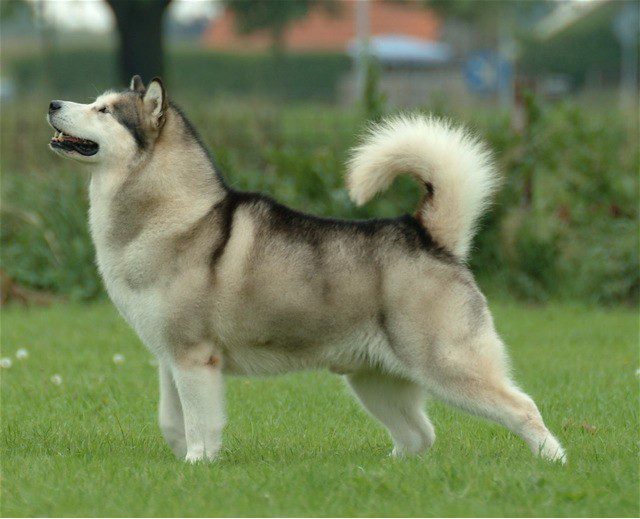
Alaskan Malamute
Contents
Characteristics of Alaskan Malamute
| Country of origin | USA |
| The size | Large |
| Growth | 59-64 cm |
| Weight | 34–39 kg |
| Age | 8 years |
| FCI breed group | Spitz and breeds of primitive type |
Brief information
- Aboriginal dog breed, considered one of the oldest in the world;
- Malamute thrives in cool climates;
- Good-natured, intelligent and very active dog;
- Suitable for families with children.
Photo of Alaskan Malamute
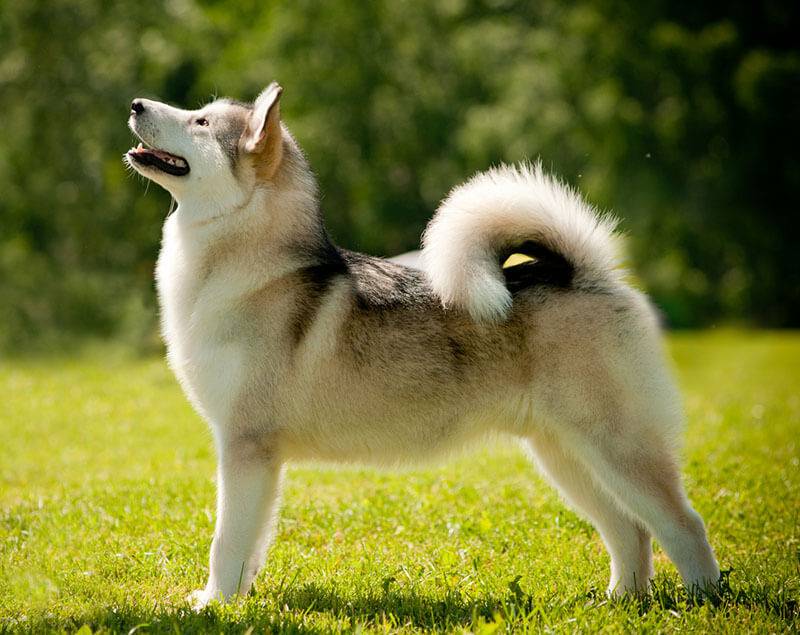
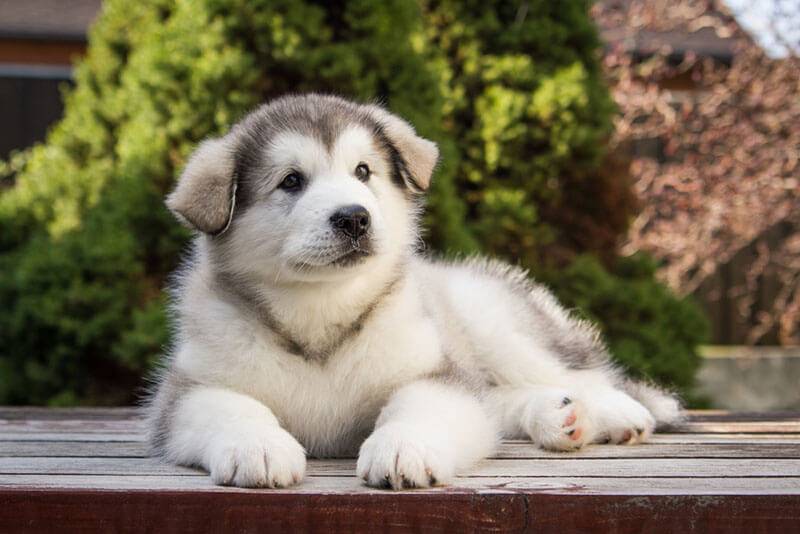
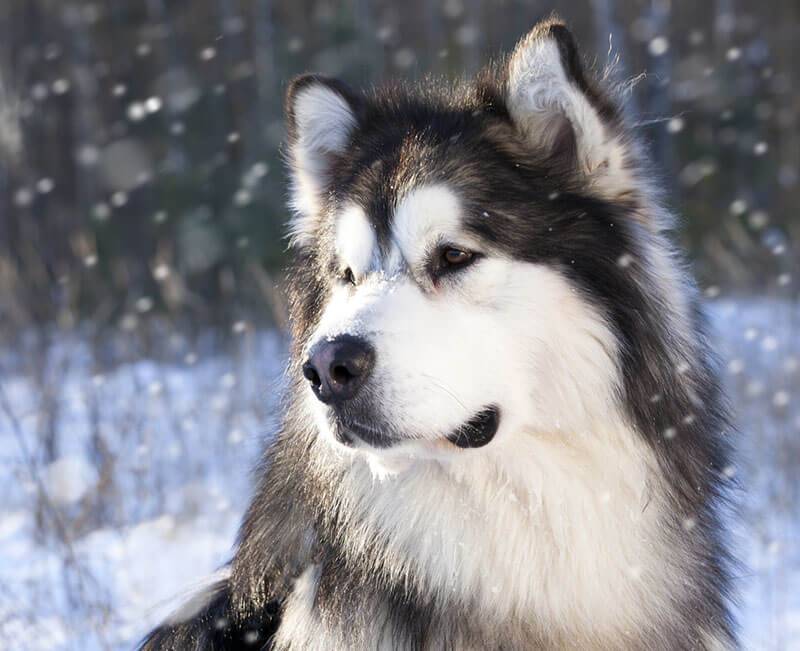
History of the breed
The Alaskan Malamute is considered one of the first domesticated dog breeds on the planet. Since ancient times, they lived side by side with the Malemute tribes in Alaska, which is why they got their name. Initially, these hardy and loyal dogs served their owners as hunting assistants. With the arrival in North America and the beginning of the gold rush, dogs of this breed began to be used as sled dogs: in the conditions of the Far North, they turned out to be indispensable for teams. However, such active exploitation of animals and their crossing with other breeds led to the fact that by 1918 the purebred Alaskan Malamute was on the verge of extinction.
Interest in the breed was revived after a team of sled dogs, including Alaskan Malamutes, helped save an entire city from a diphtheria epidemic: the vaccine took more than two weeks to be delivered by mail, and the dogs covered the same distance in just five days.
Since there was no single breed standard, from the 20s-30s. In the twentieth century, professional breeders began breeding these dogs along three lines: Kotzebue (the closest to the ancestors), M-Lut (more motley, large and aggressive) and Hinman-Irwin (combined the best qualities of the two previous ones). However, during the Second World War, almost all dogs of this breed were destroyed again, but in 1947, out of the remaining 30, their next revival began by mixing all three lines.

Character
The wolf-like Alaskan Malamute has a completely non-wolf character. Kind, a little stubborn and very friendly, this dog is the perfect pet for a large family in the conditions of life in a private home. However, these dogs are so friendly that they will not be able to act as a guard: a Malamute who has made his way to the site can joyfully greet, wagging his tail and inviting him to play.
A large yard is a real expanse for such a large dog. Active games, running and irrepressible energy are all about him. However, it is not surprising, because from time immemorial Malamutes have been used in the North as sled dogs. The love of physical work remained in their blood.
The Alaskan Malamute can sometimes be very stubborn and can be independent, especially in training. For this reason, experts do not recommend getting a Malamute as a first dog. An experienced breeder, a professional, can deal with the upbringing of representatives of this breed. And it is desirable to start from an early age.
The Alaskan Malamute does not belong to one owner: he is too friendly and sociable, so he loves the whole family. These dogs get along well with children, but it is still worth controlling their communication. If the owner has several dogs, you can be sure: the Malamute will become the leader, he is a leader by nature.
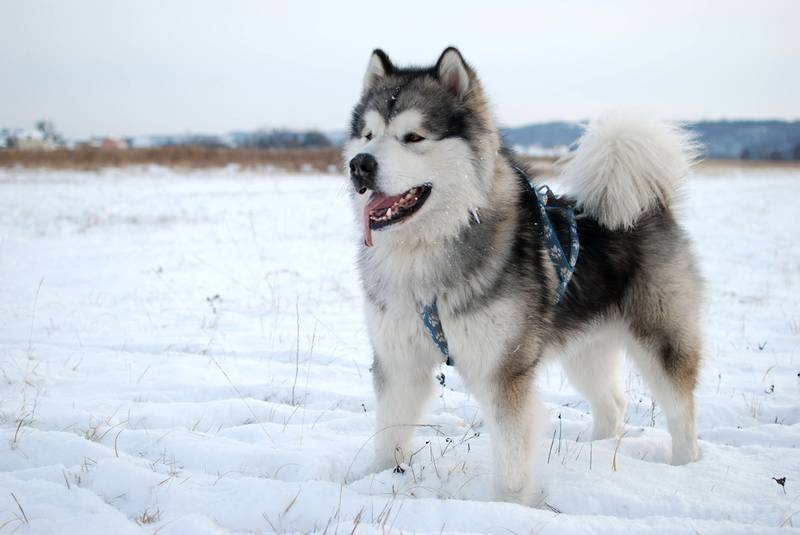
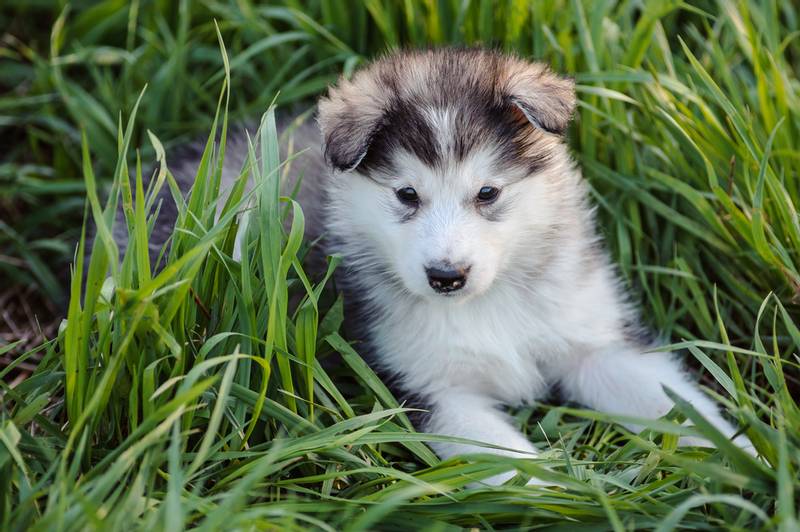
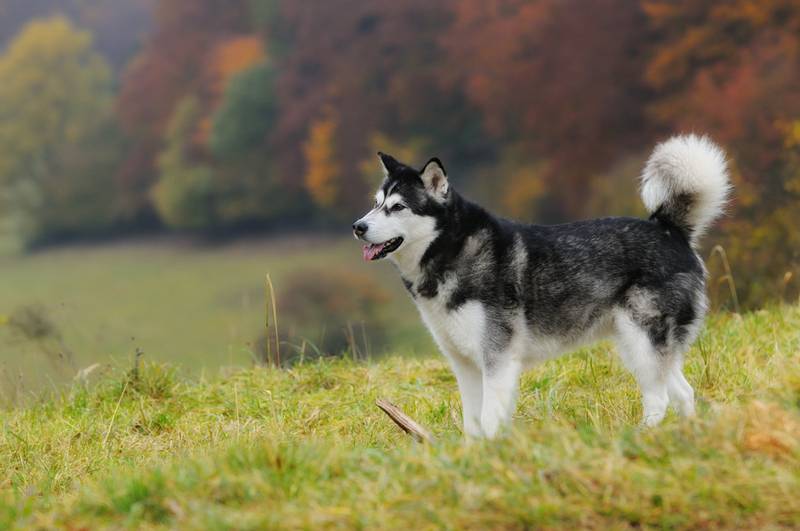
Description of the Alaskan Malamute
Alaskan Malamutes are often confused with Huskies, however, these two breeds with a common ancestor have a number of significant differences, the main of which is eye color. In the first, unlike the husky, it can never be blue, this is a disqualification vice. In addition, Alaskan Malamutes are much larger, their coat is thicker and longer. Their color is wolf, raincoat, that is, spots are not allowed to break. The lower part of the body is white, and the upper part is gray, black, white or red. Color mixing is considered a defect. The color of the muzzle may be white or with a black mask.
The physique of the Alaskan Malamutes is muscular, the limbs are well developed, the shoulders are powerful, the chest is deep, which allows them to effortlessly drag teams over long distances. The head is also rather large, with a large muzzle, slightly tapering towards the tip of the nose. The tail of the dog is fluffy, raised above the back, does not touch it. Almond-shaped slanting eyes are strictly brown, with black rims. Triangular ears are located on the edges of the skull, not too high. In an alert state, they “look” to the sides. The nose is always black (except for red dogs, brown is allowed).
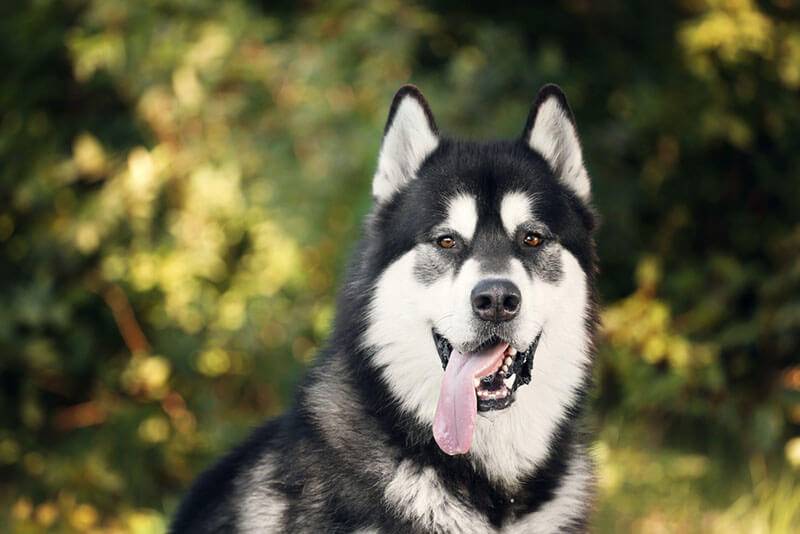
Photo of Alaskan Malamute
Care
It seems that such a large and fluffy Alaskan Malamute requires complex care. However, this is not so, because these are clean dogs. They have a fairly long coat with a developed undercoat, but it does not require special grooming. Malamutes molt twice a year, and at this time, it is really necessary to comb the dog every day. The rest of the time you can limit yourself to once a week. It is worth noting that in warm climates, the coat of the Alaskan Malamute falls out faster and more often than in cold ones.
Despite their size, the Alaskan Malamute does not eat as much as it might seem at first glance. In any case, smaller than dogs of the same size in other breeds. However, the Malamute is a big food lover, this breed is famous for its appetite and the ability to grab a bite or two. Therefore, it is very important to monitor his diet and prevent overeating: it is quite difficult to deal with pet obesity.
Conditions of detention
The Alaskan Malamute is a country dweller, and this dog will be happy to live in a separate enclosure, as long as there is enough space for games. Malamute wool allows them to easily endure severe frosts, and the constant opportunity for active pastime will make the dog truly happy. In summer, in extreme heat, the dog must be provided with constant access to water, you should not walk with it under the scorching sun.
It is also noteworthy that Malamutes are excellent shrews. It is believed that this is due to the search for small rodents that these dogs ate many years ago. To avoid dug up the yard, the dog must be taught to dig in the designated area.
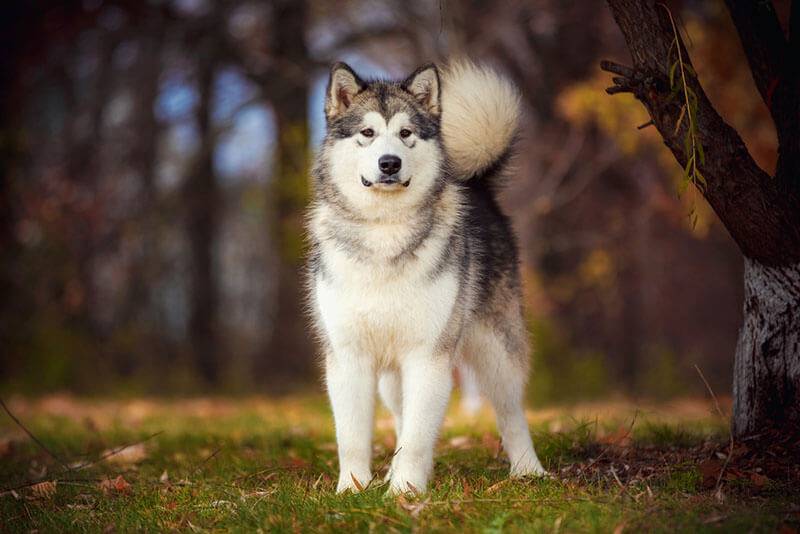
Health
Despite the fact that the Alaskan Malamute is one of the healthiest breeds, some congenital and acquired diseases do not bypass these dogs. Most often it is hip dysplasia, which is inherited and can flow into arthritis. Dogs can suffer from polyneuropathy (loss of coordination), narcolepsy (drowsiness, lethargy), hemophilia, and diabetes.
Due to an improper diet, a dog can develop osteochondrosis (if there is too much protein in the diet), bloating and thyroid disease. It is worth paying attention to the health of the dog’s organs of vision: it can suffer from cataracts, glaucoma, retinal atrophy or corneal dystrophy.
Alaskan Malamute prices
The cost of a purebred Alaskan Malamute without documents and exhibition prospects ranges from 500$. More elite representatives of the breed will cost from 800$. Such dogs should be considered as potential holders of prestigious titles.
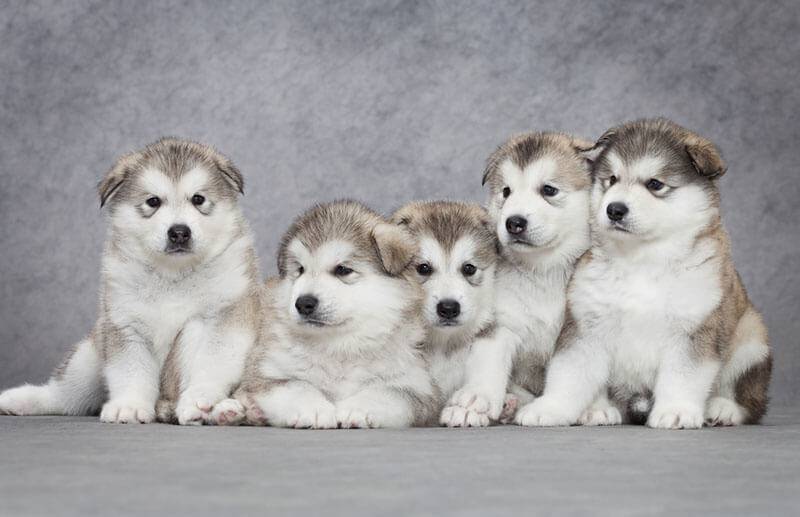
Alaskan Malamute – VIdeo



